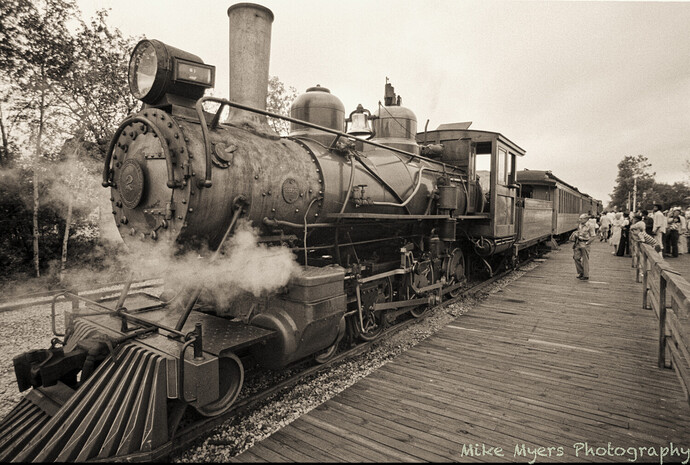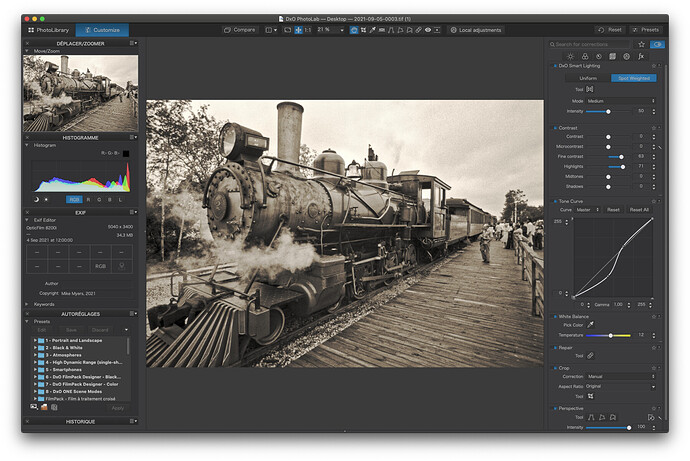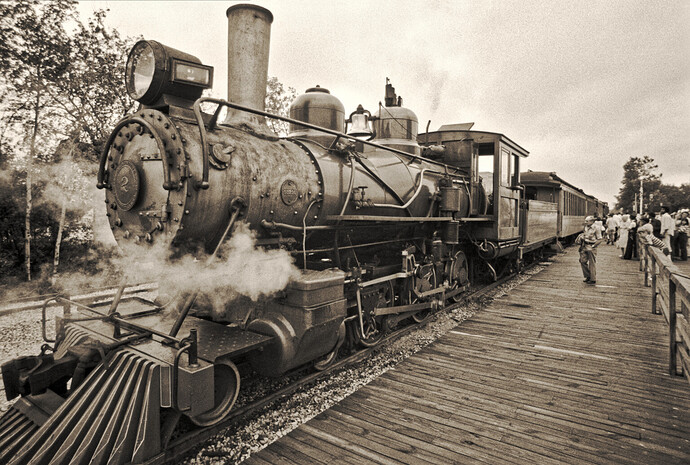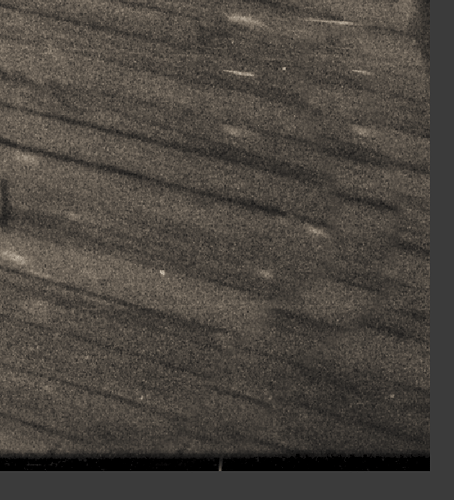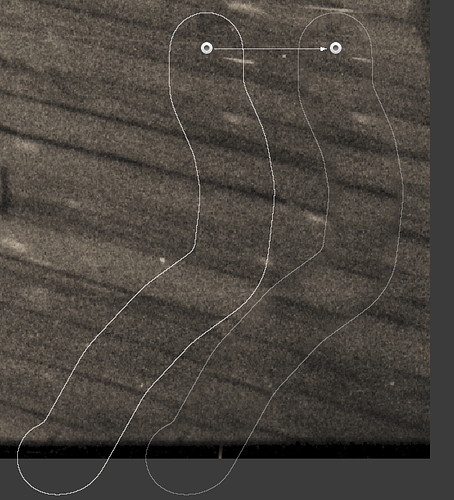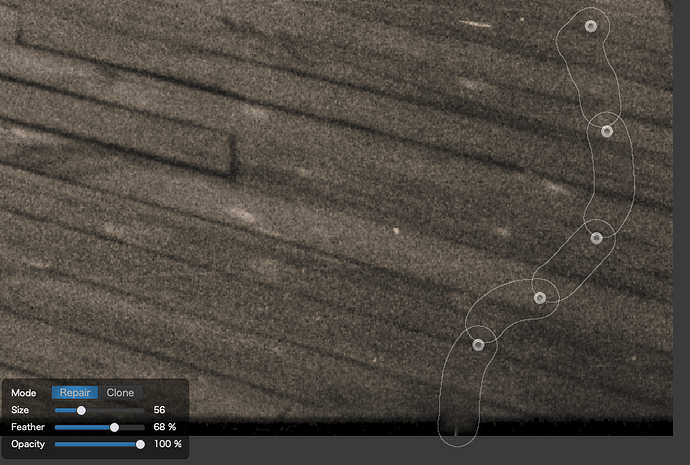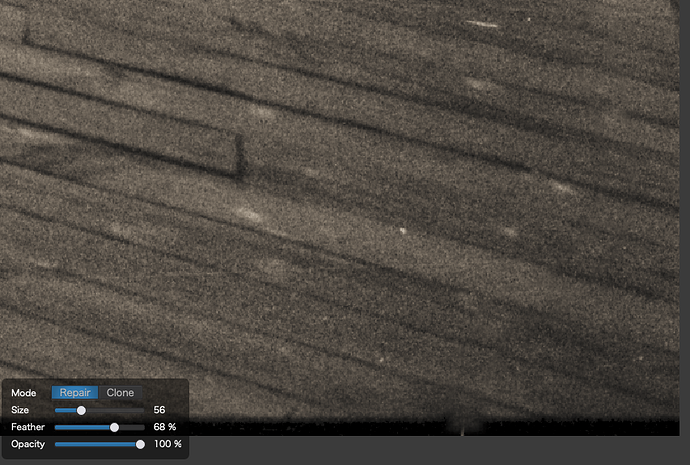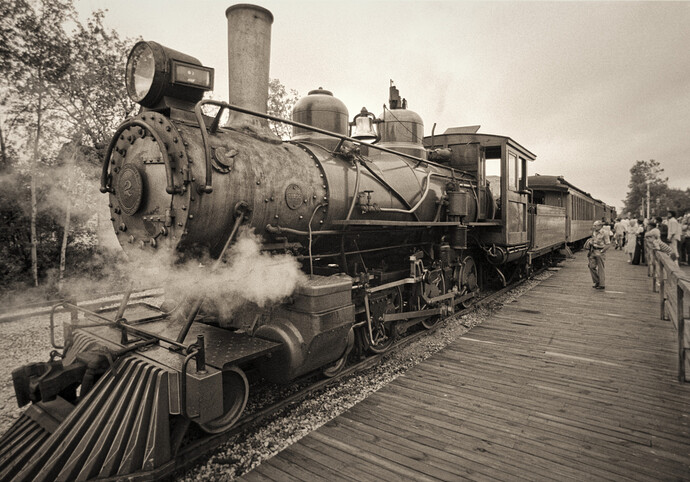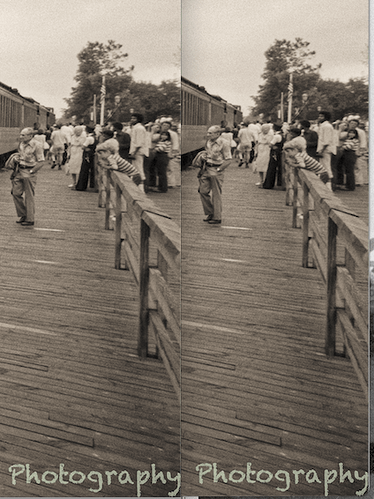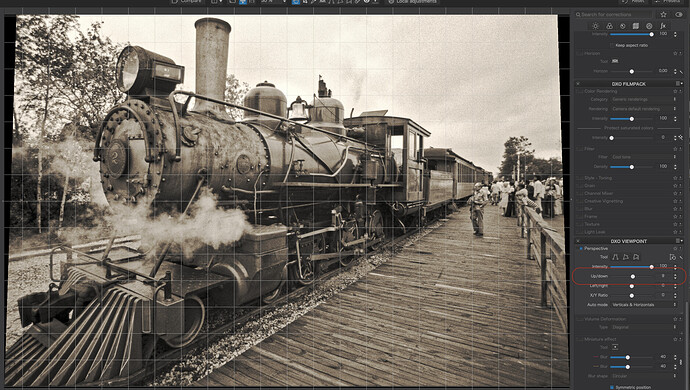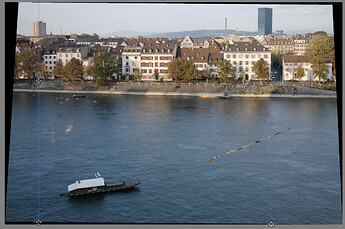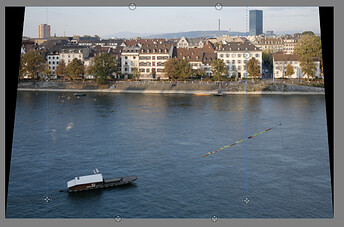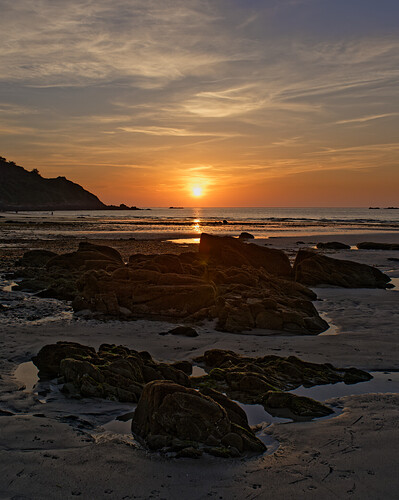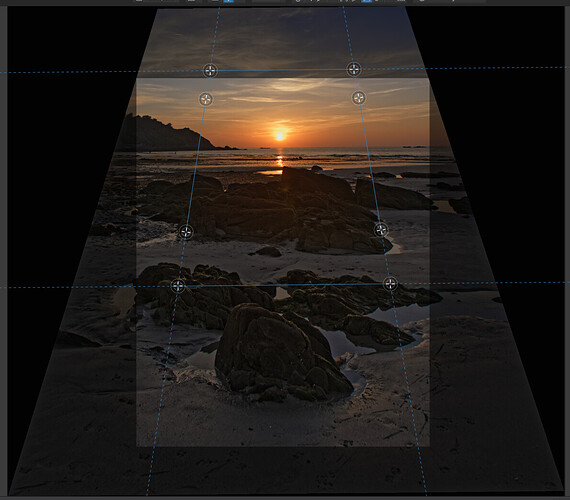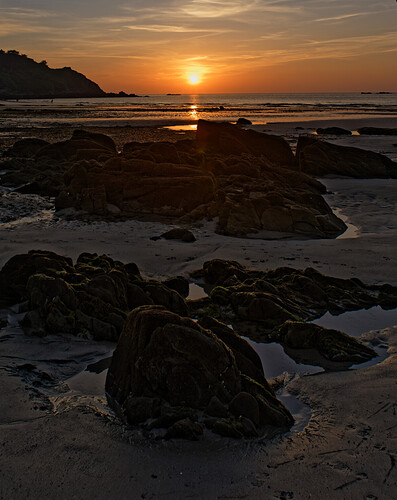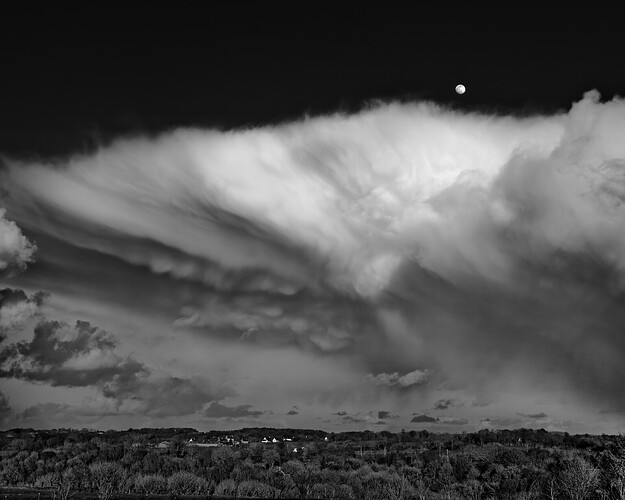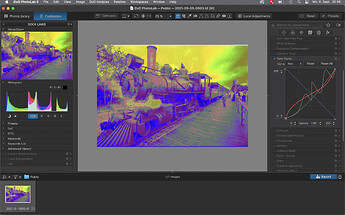I think the answer is “it can’t be done”, but I’ll ask anyway. I took this photo almost certainly in the 60’s, but maybe in the70’s, most likely with my M2, but possibly with a Nikon F that I bought around that time. It’s a “tourist train”, and I wanted a photo of the engine, with all the “touristy” stuff to explain what was going on.
I almost certainly focused on the engine, towards the front, but I didn’t stop down the lens enough to get adequate depth of field. From looking at the photo now, I must have used a wider angle lens, most likely 35mm. Anyway, it’s obvious to me now that the front of the locomotive might be out of focus, but the trees behind it are also not sharp, so maybe the lens was “soft” around the corners?
Regardless of why it looks this way, the best I could think of was to turn on “Clear View” which messed up the photo - so I used “Local Adjustments” and boosted both the “clear view” and the “micro contrast” only on the front of the engine… but then I added a correction over the trees in the top left. I left the people at the right blurry, as that adds to the image I think.
I think I’m “done” with the photo, but is there a better tool that can emphasize the sharpness, without creating horrible looking “noise” (I won’t call it grain)?
(Oh, and maybe I got more careful with the negatives, as there was minimal dust on the negatives - almost none.)
2021-09-05-0003.tif.dop (13.9 KB)
2021-09-05-0003.tif (32.7 MB)
